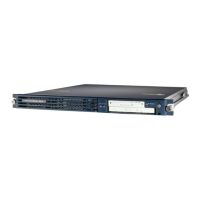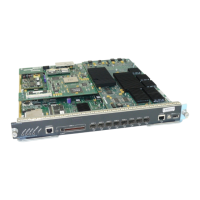9-25
User Guide for Cisco Secure ACS for Windows Server
78-14696-01, Version 3.1
Chapter 9 Working with Logging and Reports
Remote Logging
Accounting logs can be recorded in either CSV or ODBC format. For
information about configuring CSV logs, see Working with CSV Logs,
page 9-13. For information about configuring ODBC logs, see Working with
ODBC Logs, page 9-19.
b. Add to the AAA Servers table each Cisco Secure ACS that the central
logging server is to receive accounting data from. For more information, see
AAA Server Configuration, page 4-20.
Note If the central logging server is to log watchdog and update packets for
a Cisco Secure ACS, be sure that the Log Update/Watchdog Packets
from this remote AAA Server check box is selected for that
Cisco Secure ACS in the AAA Servers table.
Step 3 For each Cisco Secure ACS that is to send its accounting data to the central
logging server, follow these steps:
a. Add the central logging server to the AAA Servers table in Network
Configuration. For more information, see AAA Server Configuration,
page 4-20.
b. Enable remote logging. For more information, see Enabling and Configuring
Remote Logging, page 9-26.
Step 4 If you want to create other central logging servers, for use either as secondary
servers or as mirrored logging servers, perform Step 1 through Step 3 for each
additional server.
Remote Logging Options
Cisco Secure ACS provides the remote logging options listed below. These
options appear on the Remote Logging Setup page.
• Do not log Remotely—Cisco Secure ACS writes accounting data for locally
authenticated sessions only to the local logs that are enabled.
• Log to all selected remote log services—Cisco Secure ACS sends
accounting data for locally authenticated sessions to all Cisco Secure ACSes
in the Selected Log Services list.
